A human-inspired robotic hand based on a modular structure
ANSI/A3 R15.08-2 Safety Standard for Industrial Mobile Robot Systems and Applications Now Available
Finger-shaped sensor enables more dexterous robots
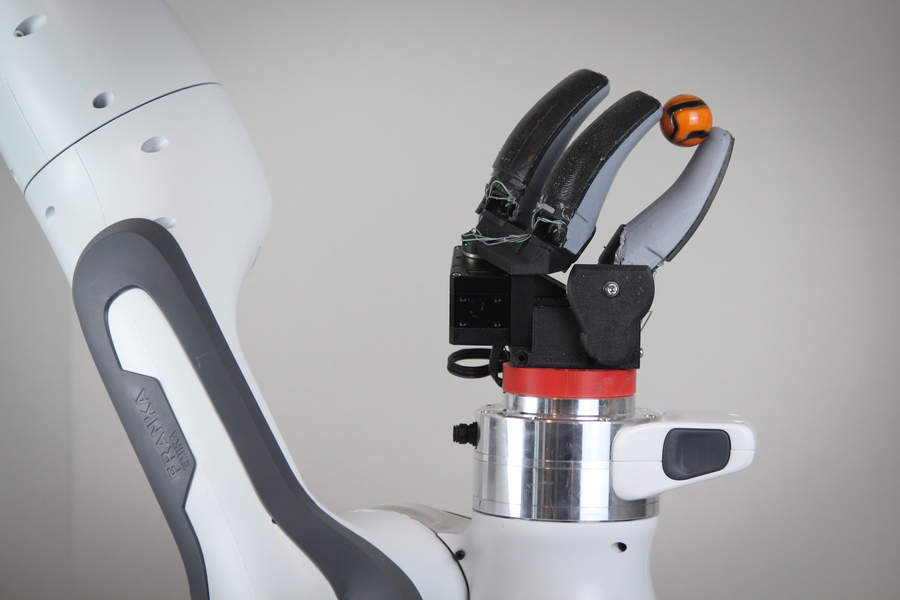
MIT researchers have developed a camera-based touch sensor that is long, curved, and shaped like a human finger. Their device, which provides high-resolution tactile sensing over a large area, could enable a robotic hand to perform multiple types of grasps. Image: Courtesy of the researchers
By Adam Zewe | MIT News
Imagine grasping a heavy object, like a pipe wrench, with one hand. You would likely grab the wrench using your entire fingers, not just your fingertips. Sensory receptors in your skin, which run along the entire length of each finger, would send information to your brain about the tool you are grasping.
In a robotic hand, tactile sensors that use cameras to obtain information about grasped objects are small and flat, so they are often located in the fingertips. These robots, in turn, use only their fingertips to grasp objects, typically with a pinching motion. This limits the manipulation tasks they can perform.
MIT researchers have developed a camera-based touch sensor that is long, curved, and shaped like a human finger. Their device provides high-resolution tactile sensing over a large area. The sensor, called the GelSight Svelte, uses two mirrors to reflect and refract light so that one camera, located in the base of the sensor, can see along the entire finger’s length.
In addition, the researchers built the finger-shaped sensor with a flexible backbone. By measuring how the backbone bends when the finger touches an object, they can estimate the force being placed on the sensor.
They used GelSight Svelte sensors to produce a robotic hand that was able to grasp a heavy object like a human would, using the entire sensing area of all three of its fingers. The hand could also perform the same pinch grasps common to traditional robotic grippers.
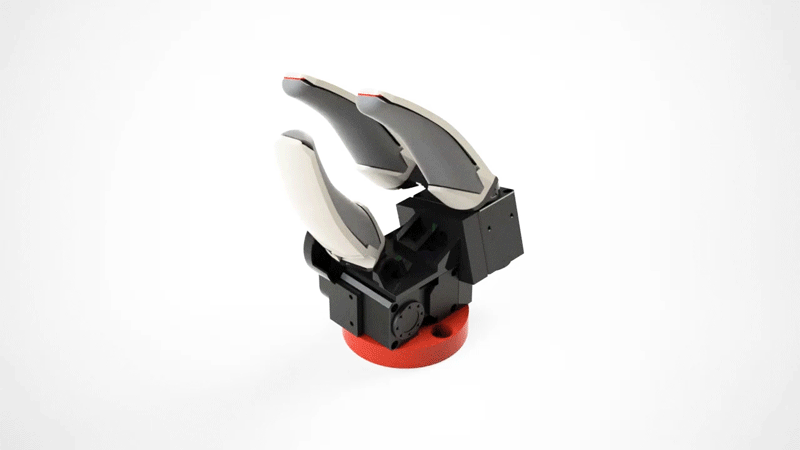
This gif shows a robotic hand that incorporates three, finger-shaped GelSight Svelte sensors. The sensors, which provide high-resolution tactile sensing over a large area, enable the hand to perform multiple grasps, including pinch grasps that use only the fingertips and a power grasp that uses the entire sensing area of all three fingers. Credit: Courtesy of the researchers
“Because our new sensor is human finger-shaped, we can use it to do different types of grasps for different tasks, instead of using pinch grasps for everything. There’s only so much you can do with a parallel jaw gripper. Our sensor really opens up some new possibilities on different manipulation tasks we could do with robots,” says Alan (Jialiang) Zhao, a mechanical engineering graduate student and lead author of a paper on GelSight Svelte.
Zhao wrote the paper with senior author Edward Adelson, the John and Dorothy Wilson Professor of Vision Science in the Department of Brain and Cognitive Sciences and a member of the Computer Science and Artificial Intelligence Laboratory (CSAIL). The research will be presented at the IEEE Conference on Intelligent Robots and Systems.
Mirror mirror
Cameras used in tactile sensors are limited by their size, the focal distance of their lenses, and their viewing angles. Therefore, these tactile sensors tend to be small and flat, which confines them to a robot’s fingertips.
With a longer sensing area, one that more closely resembles a human finger, the camera would need to sit farther from the sensing surface to see the entire area. This is particularly challenging due to size and shape restrictions of a robotic gripper.
Zhao and Adelson solved this problem using two mirrors that reflect and refract light toward a single camera located at the base of the finger.
GelSight Svelte incorporates one flat, angled mirror that sits across from the camera and one long, curved mirror that sits along the back of the sensor. These mirrors redistribute light rays from the camera in such a way that the camera can see the along the entire finger’s length.
To optimize the shape, angle, and curvature of the mirrors, the researchers designed software to simulate reflection and refraction of light.
“With this software, we can easily play around with where the mirrors are located and how they are curved to get a sense of how well the image will look after we actually make the sensor,” Zhao explains.
The mirrors, camera, and two sets of LEDs for illumination are attached to a plastic backbone and encased in a flexible skin made from silicone gel. The camera views the back of the skin from the inside; based on the deformation, it can see where contact occurs and measure the geometry of the object’s contact surface.
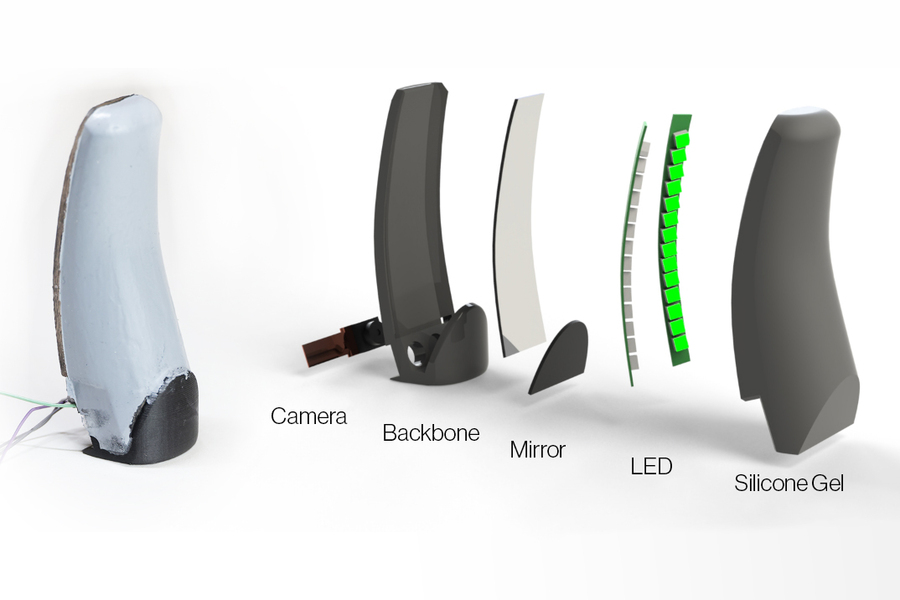
A breakdown of the components that make up the finger-like touch sensor. Image: Courtesy of the researchers
In addition, the red and green LED arrays give a sense of how deeply the gel is being pressed down when an object is grasped, due to the saturation of color at different locations on the sensor.
The researchers can use this color saturation information to reconstruct a 3D depth image of the object being grasped.
The sensor’s plastic backbone enables it to determine proprioceptive information, such as the twisting torques applied to the finger. The backbone bends and flexes when an object is grasped. The researchers use machine learning to estimate how much force is being applied to the sensor, based on these backbone deformations.
However, combining these elements into a working sensor was no easy task, Zhao says.
“Making sure you have the correct curvature for the mirror to match what we have in simulation is pretty challenging. Plus, I realized there are some kinds of superglue that inhibit the curing of silicon. It took a lot of experiments to make a sensor that actually works,” he adds.
Versatile grasping
Once they had perfected the design, the researchers tested the GelSight Svelte by pressing objects, like a screw, to different locations on the sensor to check image clarity and see how well it could determine the shape of the object.
They also used three sensors to build a GelSight Svelte hand that can perform multiple grasps, including a pinch grasp, lateral pinch grasp, and a power grasp that uses the entire sensing area of the three fingers. Most robotic hands, which are shaped like parallel jaw drippers, can only perform pinch grasps.
A three-finger power grasp enables a robotic hand to hold a heavier object more stably. However, pinch grasps are still useful when an object is very small. Being able to perform both types of grasps with one hand would give a robot more versatility, he says.
Moving forward, the researchers plan to enhance the GelSight Svelte so the sensor is articulated and can bend at the joints, more like a human finger.
“Optical-tactile finger sensors allow robots to use inexpensive cameras to collect high-resolution images of surface contact, and by observing the deformation of a flexible surface the robot estimates the contact shape and forces applied. This work represents an advancement on the GelSight finger design, with improvements in full-finger coverage and the ability to approximate bending deflection torques using image differences and machine learning,” says Monroe Kennedy III, assistant professor of mechanical engineering at Stanford University, who was not involved with this research. “Improving a robot’s sense of touch to approach human ability is a necessity and perhaps the catalyst problem for developing robots capable of working on complex, dexterous tasks.”
This research is supported, in part, by the Toyota Research Institute.
Disinfection robot boosts sanitation at veterinary medical teaching hospital
Robotic cup helps wheelchair-bound users stay hydrated
Robot Talk Episode 56 – Guillaume Doisy
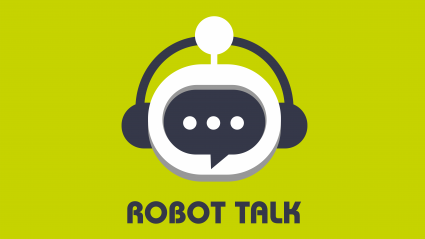
Claire chatted to Guillaume Doisy from Dexory about autonomous warehouse robots, mobile robotics, and software.
Guillaume Doisy is the current Lead Systems Architect at Dexory, the leading UK robotics and AI company building state-of-the-art fully autonomous mobile robots for use in warehouses. Guillaume has a wide range of responsibilities including building the robots ability to function autonomously. The French native has significant expertise in the field of autonomous mobile robots having begun his career at French start-up Wyca as Chief Robotics Officer. Guillaume is also a long-term contributor to ROS (Robotic Operating Software), the open-source robotics software project.
A 130g soft robot gripper that can lift 100kg
Spotlight on Fronius Welding Automation – Perfect Symbiosis of Welding Technology and Kinematics
Researchers train AI with reinforcement learning to defeat champion Street Fighter players
Tricky tangles: Robots learn to navigate vine-like vegetation
AI approach yields ‘athletically intelligent’ robotic dog
Elevating Precision Motion and Control with Magnetic Levitation to New Heights
50 women in robotics you need to know about 2023
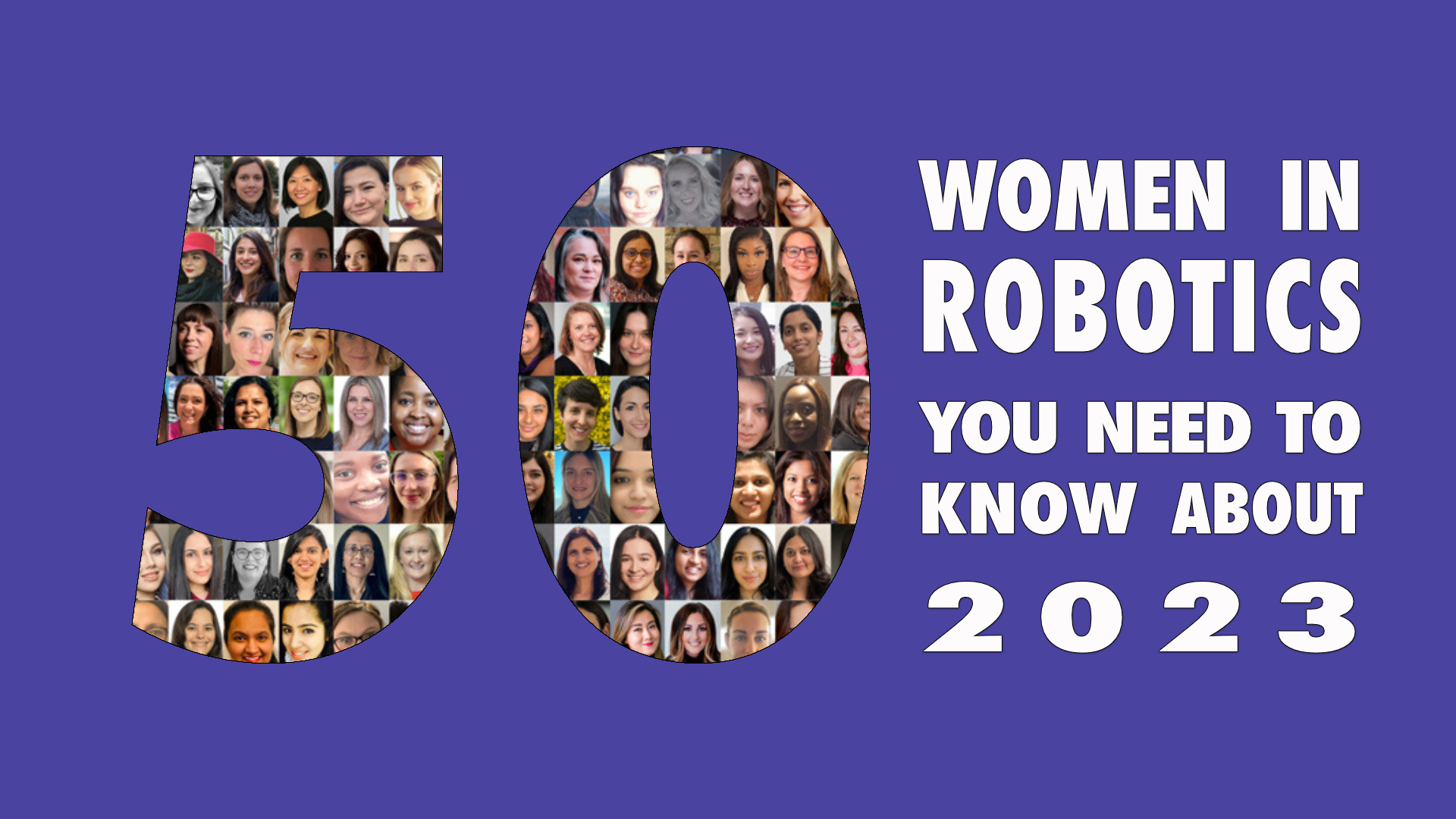
In celebration of the launch of International Women in Robotics Day, the Women in Robotics organization is proud to release another “50 women in robotics you need to know about” collection of stories. With a growing robotics industry there are many opportunities for everyone to get involved. This is why we showcase the wide range of roles that women play in robotics today.
Since 2012, the Women in Robotics organization has released a list of women building the future in robotics. The list has covered all ages, career stages, types of occupation and experience. We’ve featured more than 350 women already and we’ve shown that women have always been working in the robotics industry, in the earliest robotics research labs and companies, although those stories have often been forgotten.
This year’s collection includes Nancy Cornelius, co-founder of Boston Dynamics and the first engineer hired. Cornelius remained an integral part of Boston Dynamics until the company was sold to Google in 2013. Vandi Verma is the head of NASA’s rover (robot) program. Joanna Buttler is the head of the Global Autonomous Technology Group for Daimler Truck. And Whitney Rockley founded a venture capital company investing exclusively in ‘industrial internet’ companies like Clearpath Robotics.
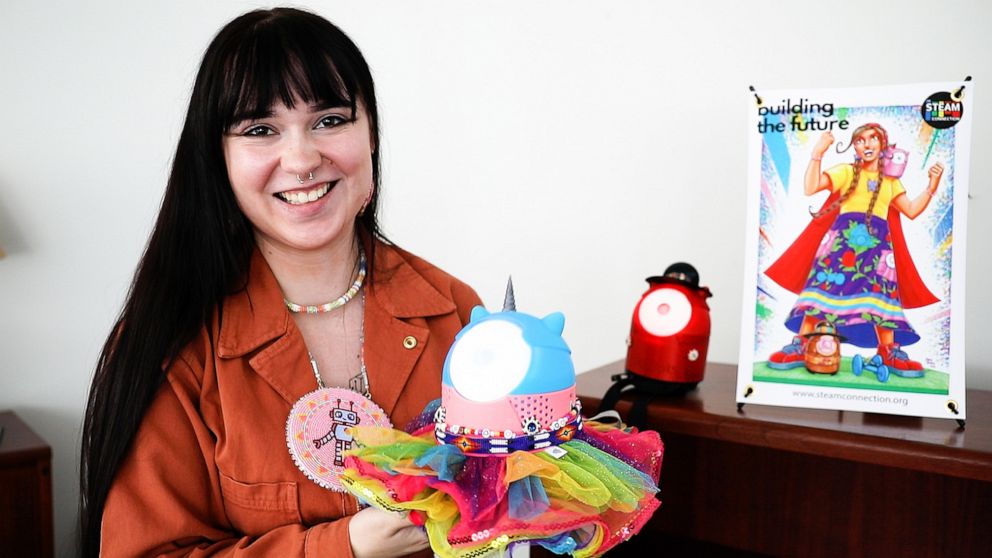
For the first time, we feature an Indigenous (Ojibwe) American roboticist, Danielle Boyer. Boyer started a non-profit The STEAM Connection to combat the difficulties that many kids have getting access to robotics. She created an affordable robot kit that’s been distributed to thousands of students, and is proudest of the SKOBOT project. Personalized robots that keep culture and language traditions alive. Boyer epitomizes the motto “Building the Future”.
We also try to feature women from all regions of the world and this year’s collection represents Nigeria, India, China, Australia, Japan, Switzerland, Croatia, Korea, Denmark, Singapore, Italy, Romania, United States, Sweden, Spain, Canada, the UK, Israel, Austria, Belgium, Mexico, Argentina and Brazil. There is an active Latinx community in Women in Robotics engaged in translating more robotics information into Spanish, hoping to create more connections between the global robotics community and the roboticists, and potential roboticists, of Latin America.
There have always been women doing great things in robotics! And we’re pleased to present another collection of strong female role models for young and upcoming roboticists (of any gender).
You can also join in the Women in Robotics celebrations today and throughout October, with events listed on the women in robotics site, like Diversity Cocktails at the IROS conference in Detroit, or the launch of the Los Angeles women in robotics chapter. Women in Robotics is a global community organization for women and non-binary people working in robotics and those who’d like to work in robotics. Learn more at https://womeninrobotics.org
Join our events, host your own events, share our celebration on social media!